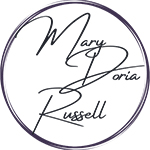It’s official: Epitaph will be out in the spring of 2015. If you just groaned about having to wait so long, thank you. Personally? I’m not distressed.
The manuscript was due next month and since there’s a long process between submission and publication, I’ve been expecting a late-2014 pub date. Having a book come out just before Christmas is not necessarily a good thing. Most book reviewers are assembling their Ten Best lists in November and while that retrospection is going on, it can be harder for a new novel to get noticed and reviewed.
So spring of 2015 is fine with me. There will be space for reviews and time for word-of-mouth to take hold. It’ll be available for Father’s Day gifts and summer reading lists. Maybe it will make a few Ten Best lists for the following Christmas.
That’s the bad-ish news. The good news is that my publisher asked if I could wait until February 2 to submit the manuscript, to which I responded, “Lemme think about it. Yes.”
I’ve been working like crazy since January to make my November deadline. Epitaph is complete now. It’s not finished. Finished is very different from complete and I’m pleased to have eight more weeks to work on this book before it goes to New York.
Last month, I sent the manuscript to half a dozen “beta test” readers who were seeing it for the first time. Three were familiar with the Tombstone story; three were Tombstone virgins. I’d already cut 16,000 words out of the first complete draft, which introduced a lot of small errors, so everyone found typos and missing words. There were also clarity issues, but the overall story seems to be holding up to scrutiny. Several readers have asked for more about Wyatt and Josie’s old age, so I’ve filled out their Hollywood years with a few new paragraphs. There have been consistent complaints about a narrative tangle in the last three chapters. It’ll take some work to eliminate the flashbacks, but the flow will be better I’m done.
I do all my composition on the computer and edit constantly as the story develops. At this stage, however, I print the manuscript out and immediately discover huge, shocking problems that I never noticed before. When I was younger, I worried that this was early evidence of cognitive decline. (What was I thinking when I put that sentence in this paragraph? Why didn’t I ever notice that I repeated this information two pages later? How could I have missed these giant mistakes so many times?) The comforting neurological fact is that different segments of the visual and language-processing regions of your brain light up when you shift input modalities from screen to paper. You literally, physically see things differently, which is why reading a physical book really is different from using an e-reader.
Even with a large monitor, I only see a portion of each page on screen. (I could set the screen up to show two pages at once, but then the font’s too small for my old eyes to read comfortably.) Printing the pages gives me three times as much text to work on; when I lay two pages side by side, I see even more. So while there is a lot of bad news when I begin to edit on paper, it’s good to discover the messed-up parts when I can still do something about them.
(Writer Tech Tip: I also find it helpful to lift random chunks of manuscript off the pile of paper and edit out of sequence when I want to shift my focus from narrative to prose.)
When I’m done with this round of editing, I’ll reprint and reread from start to finish, editing again to smooth out transitions. Themes seem to emerge at that stage and I try to draw them out more, though I’ll try not to bash the reader over the head with them. At the end of January, the manuscript will be ready for the pros in New York. There will be responses and suggestions from my agents and editor, and I’ll begin yet another bout of editing and polishing.
It might sound tedious to you, but this is the part I like best. The book is there. It exists. All I have to do is make it better.
